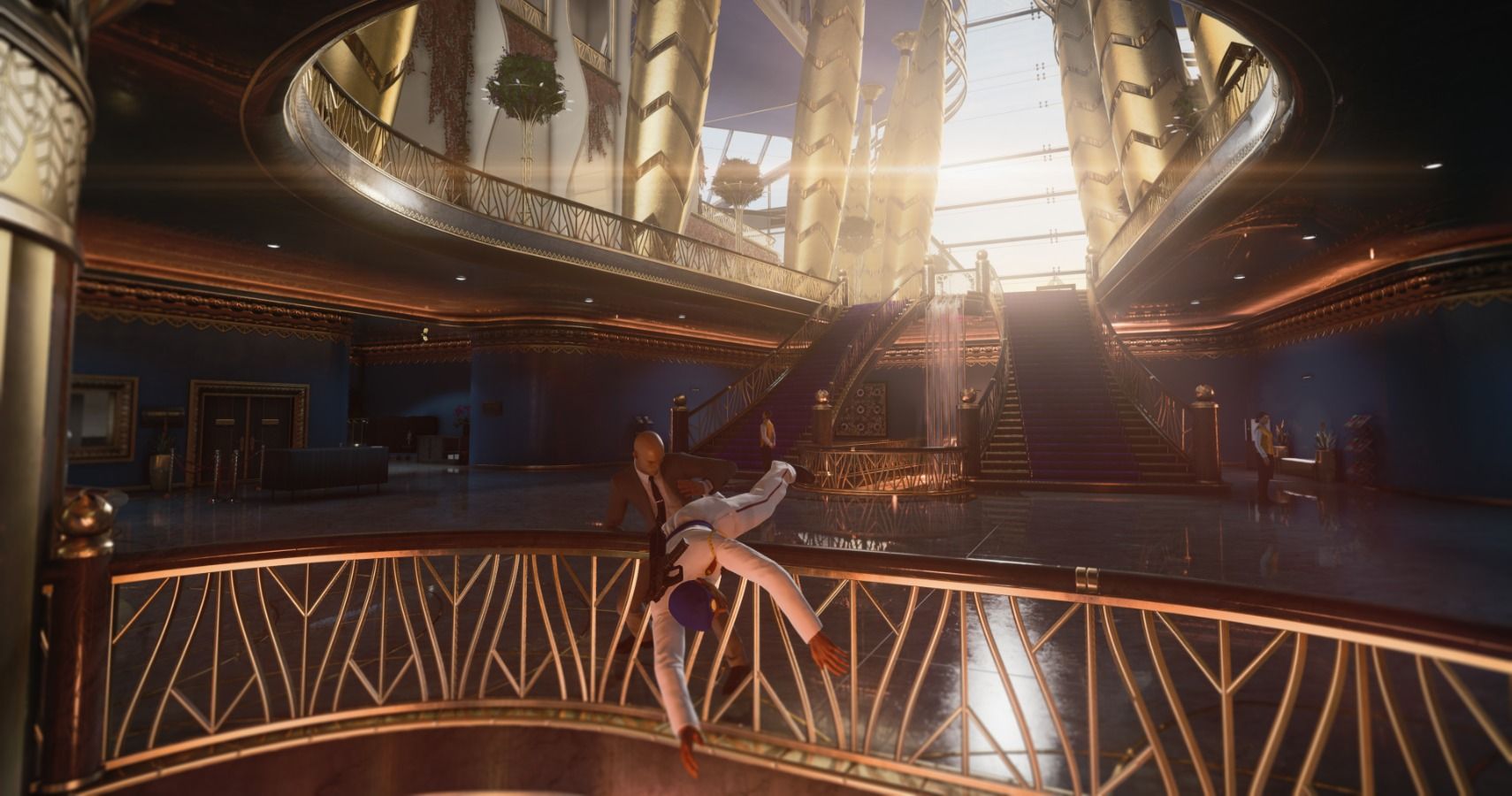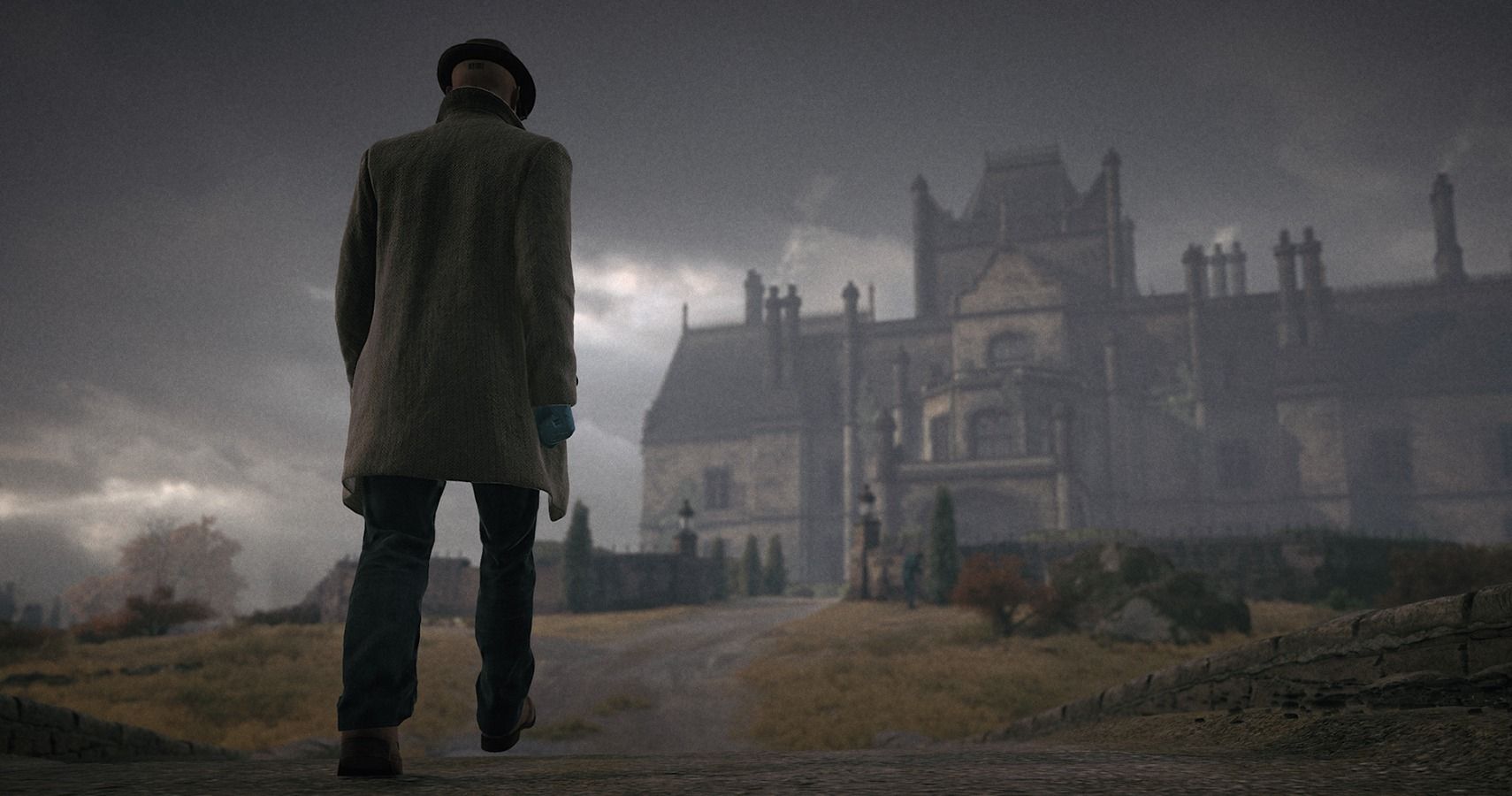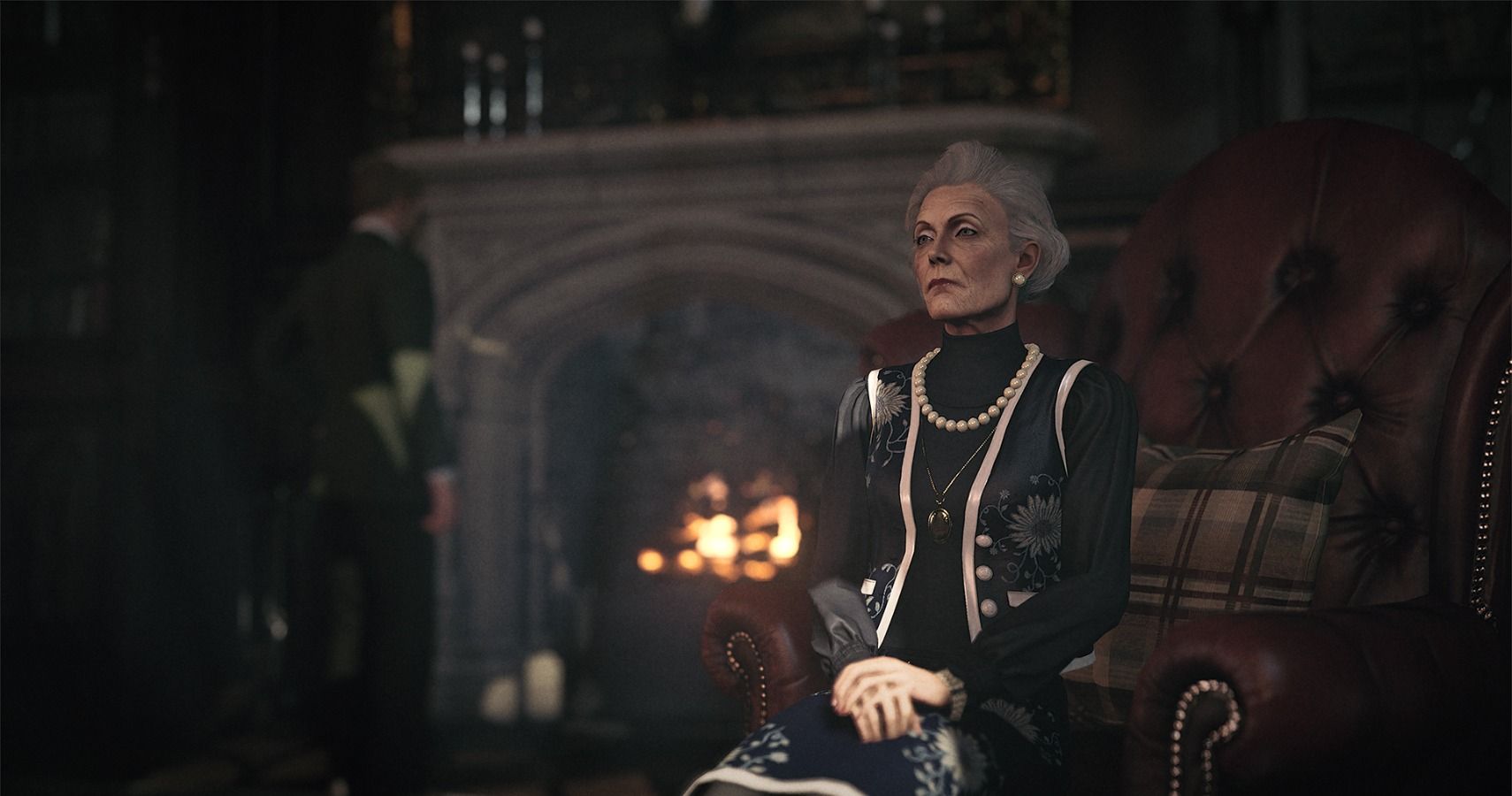Hitman 2 opened with what’s perhaps the series’ most intimate assassination. I mean, sure, we murdered a guy taking a bath in the previous games, but there’s something about a home invasion that somehow feels more dishonourable than shooting a naked dude. You stalk up the moonlit and windswept beach of Hawke’s Bay, roaring waves at your back, and break into the beachside house. If you wait long enough, you can hide out in the target’s bedroom and wait for them to go to sleep before smothering them with a pillow next to their slumbering spouse. It’s brilliantly grim.
For Hitman 3, IO Interactive wanted the opening to contrast against that mission, and so you’re introduced to the World of Assassination once again, this time via a halo jump down to the tallest skyscraper in the world. You begin the mission above the clouds in Dubai, helmet and jumpsuit on, standing on the support beams - endless sky to your left and sheer reflective glass to your right. As you round the corner, the camera pulls back so you can appreciate the scale, and there’s a conveniently placed toolbox for you to kick over the edge before watching it tumble down into the void.
Both of the missions available in Hitman 3’s preview build start in a more linear fashion than usual - a flash of Hitman Absolution-style level design to set the stage and introduce the locations before settling back into the intricate puzzle-solving sandboxes people play these games for. It’s a good change. In Hitman and Hitman 2, I rarely used the alternate starting locations, but the linear default opening encourages you to select one of them once you’re more familiar with a location, allowing you to skip the intro and see the level from a new angle. As well as helping to tutorialise, it feels like those linear openings are also an attempt to take the series more mainstream. Some people find games like this intimidating - games where failure is a part of the learning process and you’re mostly left to your own devices.
For Dubai, that linear opening teaches you how to use a new gadget - a Bond-like spy phone that can open digital locks - and it’s over relatively quickly, ending with Agent 47 walking through dressing room curtains and emerging on the other side looking slick in an ashen suit. Once inside, you’re immediately hit by the glamour of this place, the Burj Al-Ghazali, with its glass floors above sheer drops, gilded columns, art installations, and magnificent sculptures. “But with a small loan from my father, I soon built up a construction empire worthy of my family name,” brags one hotel guest to another, as servants and hotel staff mill around in featureless back rooms.
As always, the level is almost like a clockwork piece where each gear is an NPC. You act as a crowbar that can be jammed into any gear to disrupt the mechanism. It’s a game about learning who does what and when, searching for opportunities in routine. There’s also another concession to accessibility here - there are fewer Opportunities (signature kills that are explicitly pointed out by intel in a menu, allowing you to follow a series of checkpoints to take out your targets in a special way). I think this is to avoid overwhelming new players, but it also has a side effect of allowing seasoned players to come up with their own assassination methods once they’ve got the handful of Opportunities ticked off. It’s not necessarily a bad thing.
There are some other surprises in the Burj Al-Ghazali, too. Bathrooms, usually safe havens for Agent 47 to do his work and stash a body, now have restroom assistants - at least outside of the staff areas - so you can’t always lure someone inside and drown them in a toilet. This is a luxury hotel for the super-rich, after all, and we can’t expect Tories to dry their own hands, can we? There are also a bunch of surprising routes up the skyscraper to approach your two targets. You can head outside and use the struts to make your way up, climb up elevator shafts, creep into the staff areas, find access codes, or simply dress like someone with access and stroll right on up before battering someone to death with a banana.
The Opportunities that are here are as brilliant as ever. You can take on the guise of a target’s personal bodyguard by stealing some papers and clothes. Once you’ve been assigned to him, he asks you to prove your skill by hitting some moving targets with a knife. Do you add his face to the list of targets and risk the other guard spotting you or do you wait and see if another, less risky window presents itself? A different Opportunity sees you, the world’s best assassin, steal the clothes of another assassin and do some wetwork to erase a nosey journalist, allowing you to build trust with one of your actual targets. Another sees you draw both targets to the penthouse suite and lock it down, trapping them inside with you and a letter opener.
You can tell it’s the last game in the series because of how the story plays out through the missions. The bulk of Hitman’s story, outside of the cutscenes between levels, has always happened in overheard conversations or narration from your handler, and here that’s turned up to 11 - it’s stuffed with references to previous assassinations, locations, and key characters, the story getting deeper and unfolding more as you replay levels and piece it together just like those NPC routines. The story and gameplay are a perfect marriage of a holistic vision, and that’s most apparent in the second mission available in the preview build.
From the new money of Dubai to the old money of Dartmoor, England, the next mission takes you to a countryside mansion to solve a murder mystery. Hitman 3’s Death in the Family level is basically playable Knives Out - IO Interactive, who recently announced it is working on a James Bond game, clearly has the hots for Daniel Craig. Your target is the matriarch of a wealthy English family who’s faking her own death. You’re here to make that death real, but there’s also been an actual death in the family - an apparent suicide that’s suspected to be foul play. On approach to the manor, you trail a private detective who’s here to solve the case. The linear opening essentially screams as you that it wants you to knock him out, stuff him in a closet, and steal his clothes. You can and should assume his identity at the earliest opportunity.
Death in the Family is one of the most experimental Hitman missions ever made. I won’t spoil it here, but solving the mystery of who committed the crime is enough to make you forget you’re actually here to murder an old lady.
Dressed as the detective, an outsider who’s been hired by the family, there’s no one here who can see through your disguise - so as long as you bundled the real detective in a wardrobe, you can roam free across the entire map without suspicion, outside of a couple of small areas. For a while, I forgot I was even playing a Hitman game as I wandered around the grounds finding clues and questioning suspects looking for alibis. Right up until, somewhere unseen, the murderer killed my target for me.
That moment encapsulates what’s special about the Hitman games. While they’re unashamedly games - these people have personality but they don’t feel human - the world feels like it can happily exist without you, like clockwork. You’re just here to take out that one cog.






